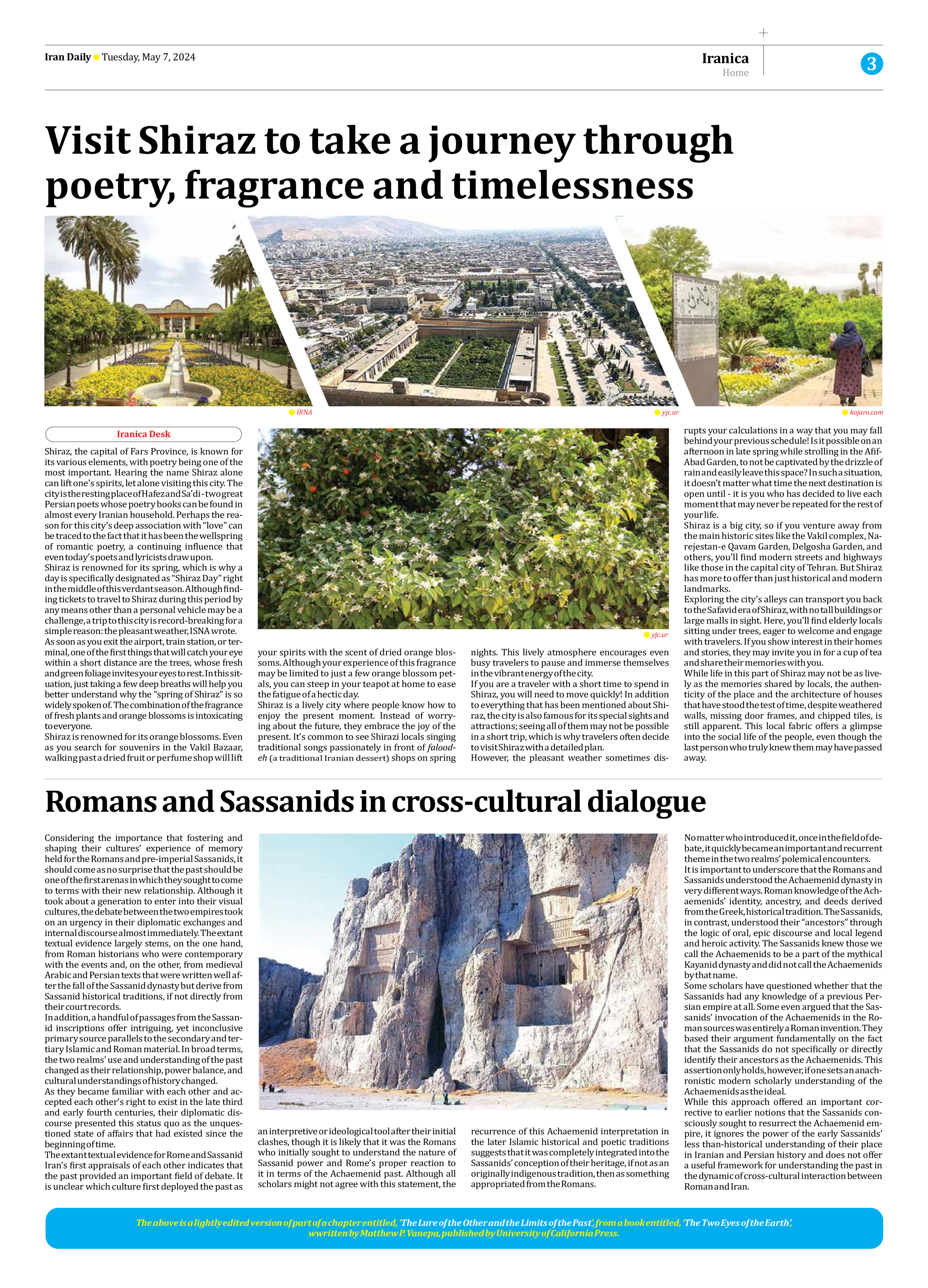
Romans and Sassanids in cross-cultural dialogue
Considering the importance that fostering and shaping their cultures’ experience of memory held for the Romans and pre-imperial Sassanids, it should come as no surprise that the past should be one of the first arenas in which they sought to come to terms with their new relationship. Although it took about a generation to enter into their visual cultures, the debate between the two empires took on an urgency in their diplomatic exchanges and internal discourse almost immediately. The extant textual evidence largely stems, on the one hand, from Roman historians who were contemporary with the events and, on the other, from medieval Arabic and Persian texts that were written well after the fall of the Sassanid dynasty but derive from Sassanid historical traditions, if not directly from their court records.
In addition, a handful of passages from the Sassanid inscriptions offer intriguing, yet inconclusive primary source parallels to the secondary and tertiary Islamic and Roman material. In broad terms, the two realms’ use and understanding of the past changed as their relationship, power balance, and cultural understandings of history changed.
As they became familiar with each other and accepted each other’s right to exist in the late third and early fourth centuries, their diplomatic discourse presented this status quo as the unquestioned state of affairs that had existed since the beginning of time.
The extant textual evidence for Rome and Sassanid Iran’s first appraisals of each other indicates that the past provided an important field of debate. It is unclear which culture first deployed the past as an interpretive or ideological tool after their initial clashes, though it is likely that it was the Romans who initially sought to understand the nature of Sassanid power and Rome’s proper reaction to it in terms of the Achaemenid past. Although all scholars might not agree with this statement, the recurrence of this Achaemenid interpretation in the later Islamic historical and poetic traditions suggests that it was completely integrated into the Sassanids’ conception of their heritage, if not as an originally indigenous tradition, then as something appropriated from the Romans.
No matter who introduced it, once in the field of debate, it quickly became an important and recurrent theme in the two realms’ polemical encounters.
It is important to underscore that the Romans and Sassanids understood the Achaemenid dynasty in very different ways. Roman knowledge of the Achaemenids’ identity, ancestry, and deeds derived from the Greek, historical tradition. The Sassanids, in contrast, understood their “ancestors” through the logic of oral, epic discourse and local legend and heroic activity. The Sassanids knew those we call the Achaemenids to be a part of the mythical Kayanid dynasty and did not call the Achaemenids by that name.
Some scholars have questioned whether that the Sassanids had any knowledge of a previous Persian empire at all. Some even argued that the Sassanids’ invocation of the Achaemenids in the Roman sources was entirely a Roman invention. They based their argument fundamentally on the fact that the Sassanids do not specifically or directly identify their ancestors as the Achaemenids. This assertion only holds, however, if one sets an anachronistic modern scholarly understanding of the Achaemenids as the ideal.
While this approach offered an important corrective to earlier notions that the Sassanids consciously sought to resurrect the Achaemenid empire, it ignores the power of the early Sassanids’ less than-historical understanding of their place in Iranian and Persian history and does not offer a useful framework for understanding the past in the dynamic of cross-cultural interaction between Roman and Iran.







